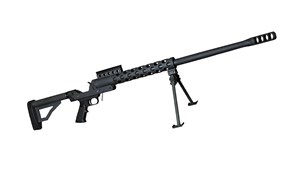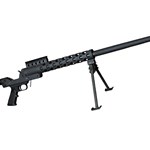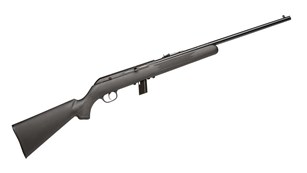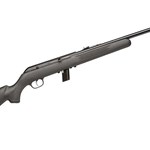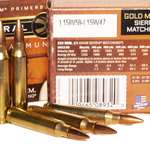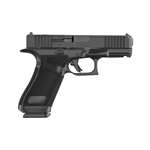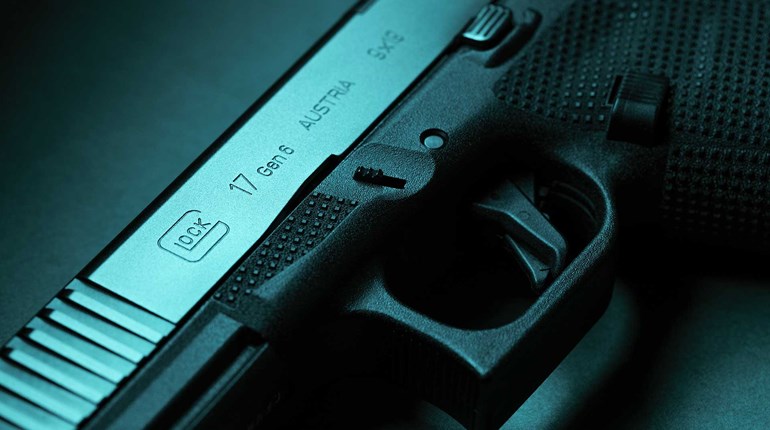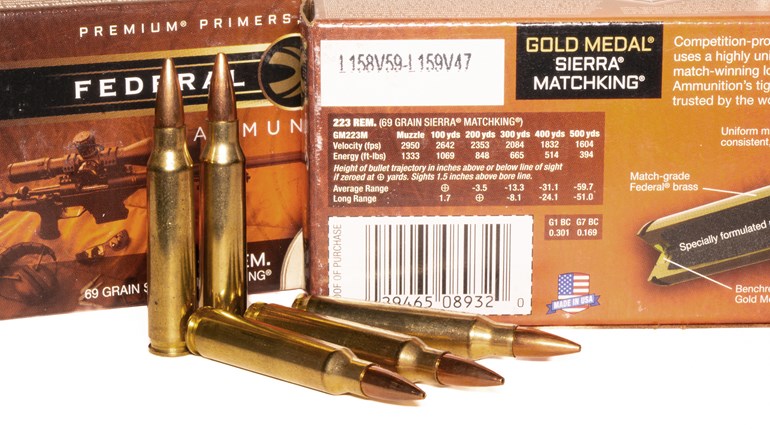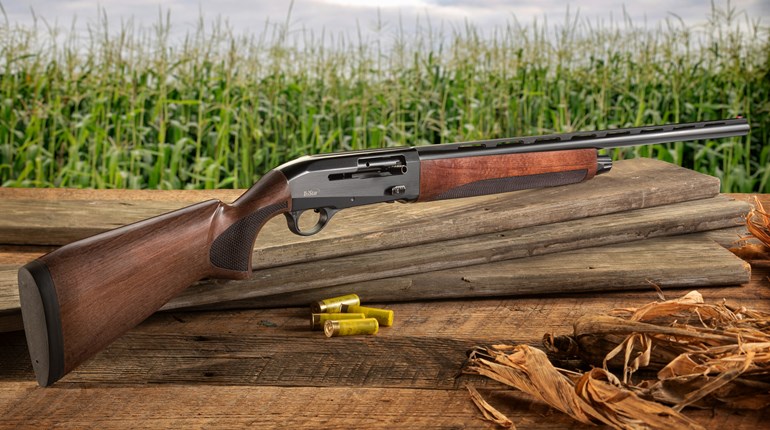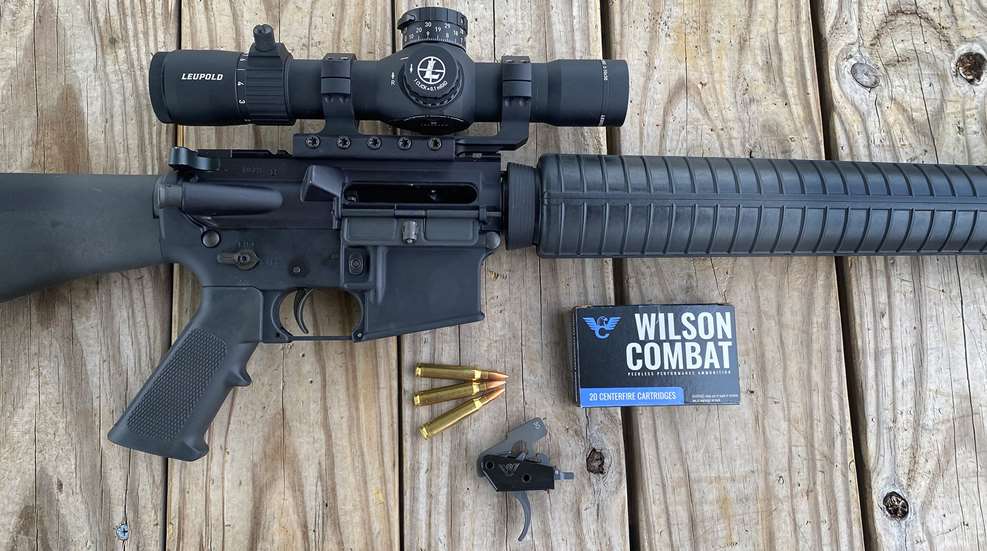
Cornerstone Performance is a small training outfit located in Central Texas, and its skipper, Eric Wise, presents an incredible and in-depth two-day LPVO (Low Power Variable Optic) course which I recently attended. During the afternoon of the first training day, Wise lectured students on the finer points of boosting carbine performance and accuracy. There was something that Wise said that I still haven’t forgotten, even more than a year later. He mentioned that in most cases, shooters are actually better off upgrading their carbines’ triggers before trying to do anything more drastic, like swapping the barrel or rebuilding the firearm.
Obviously, replacing a trigger assembly on an AR-15 is far easier than rebuilding it. Beyond that, let’s not forget that high-end accuracy driven AR-15 barrels are on the pricier side too. This also makes a high-end trigger assembly not only the path of least resistance but also likely the least costly first step.
Wise’s idea sounded interesting and reasonable. I wanted to see this trigger concept in action for myself. To do so, I used Wilson Combat’s Tactical Trigger Unit 3-Gun aftermarket trigger and compared it against a stock USGI single-stage “mil-spec” trigger.
The Protocol
To evaluate this “Trigger Effect”, as I’m calling it, I decided to set up a very simple experiment that allowed me to put Wise’s statement to the test in a very straightforward manner. By any means, this isn’t a grand experiment. Its purpose is to confirm that all else being equal, upgrading an AR-15’s trigger can help tighten the groups it prints.
To carry out the experiment, I mounted my Leupold Mark5 HD 2-10x30 on a Colt AR-15A4 rifle. After confirming zero, I fired two different 10-round groups with match-grade ammunition at 100 yards.
I shot the first group with the stock USGI trigger. I then shot the second group after swapping the stock trigger out with the Wilson Combat TTU 3G. I also waited approximately 45 mins to let the rifle’s bore completely cool down to ambient temperature before shooting the second string.
All my shots were taken from a benched and seated position while fully supporting the Colt with front and rear bags. Because my goal was to eliminate every variable except for the rifle’s trigger, I also took careful aim and broke each shot at a natural rhythm.
I shot at a clean piece of cardboard with a hand-drawn ½ inch circle. I posted this to the target stand at the 100-yard berm of my gun club. In all, the shooting was simple and straightforward.
The Products Featured In This Experiment
Colt AR-15A4
I pulled out my Colt 6700 20-inch AR-15 from the back of the safe. This Colt AR-15 is perfect for this test because it’s a completely stock rifle with a very low round count. The interior of the bore is in a like-new condition and can print decently average groups with its standard non-free floated button-rifled barrel and USGI single-stage trigger. I also hadn’t shot this rifle since my original review, so this also felt like a good excuse to dust it off and shoot it again.
Wilson Combat TTU-3G Trigger
I used Wilson Combat’s TR-TTU-3G, a trigger similar to the heavy duty TTU-H2 I previously covered, to shoot the second group. While the TTU-H2 is a heavy-duty combat-style trigger with extra-power springs, the TTU-3G is a 3-Gun competition unit with a lighter trigger pull. After easily swapping it out over the shooting bench right on the firing line, I dry-fired it a few times before loading the Colt with live cartridges. In essence, I used the TTU-3G directly from its packaging without adding any extra lubricant or enhancements. In many ways the TTU-3G is exactly the same as the TTU-H2 (or any other of Wilson’s TTU products), but the 3G is specifically tuned to have a lighter break and rapid reset. Using a trigger pull scale, ten trigger pulls averaged out to 2 pounds, 11.2 ounces.
Wilson Combat .223 Rem. 77-grain HPBT Match Ammo
Using high-quality and consistent ammunition in this experiment is also imperative, as ammunition loaded to looser standards can skew results and mask whether changing triggers can make a difference. I opted to shoot Wilson Combat’s .223 Rem. 77-grain HPBT Match cartridges to test for the Trigger Effect. These cartridges are loaded with 77-grain Sierra Matchking projectiles, which optimized for precision-oriented rifle ammunition for AR-15 pattern rifles with faster twist barrels. Even though it wasn’t germane to my experiment, I also captured the muzzle velocity for all 21 rounds of Wilson Combat .223 Rem. match ammo I fired (one sighter and two 10-shot groups). On the box, the advertised muzzle velocity is 2440 fps out of a 16-inch barrel, and with my Colt’s 20-inch barrel, I clocked 2654 fps on average.
The Results Of The Trigger Effect
 There are a wide variety of mobile-phone based apps currently available that can measure groups. Since I already use it for ballistic data, I used the “group analysis” feature that’s on Hornady’s app. All of the posted figures from this experiment are derived from that app.
There are a wide variety of mobile-phone based apps currently available that can measure groups. Since I already use it for ballistic data, I used the “group analysis” feature that’s on Hornady’s app. All of the posted figures from this experiment are derived from that app.
Group 1 With USGI Trigger
- Group Size, Extreme Spread: 1.98 inches
- Mean Radius: .63 inches
 Group 2 With Wilson Combat TTU-3G
Group 2 With Wilson Combat TTU-3G
- Group Size, Extreme Spread: 1.76 inches
- Mean Radius: .70 inches
In conclusion, yes, upgrading an AR-15’s trigger can yield to tighter groups and a higher degree of precision.
I’ll concede that a more thorough experiment would have included a wider data-set as opposed to merely 10-round “Group 1” versus “Group 2.” Arguably, 20-shot composite groups are also more statistically sound, but time and money come at a premium. Regardless, I was able to prove Wise’s claim prima-facie by shooting only two groups. And what’s more–if I’m being honest with myself, I could have shot the second group a little more deliberately. As I was calling my shots, I noticed I was getting a little too relaxed while shooting, ironically in part because the TTU-3G is so smooth. I believe this to be the likely reason my composite group has two main clusters and why its mean radius is skewed. And yet, its extreme spread is still shorter than Group 1’s.
Conceptually it makes sense that an easier trigger can yield better precision. However, this wasn’t the most remarkable takeaway for me. What shocked me was how much easier it was to take shots with the “nicer” aftermarket Wilson Combat trigger independent of its influence over bullet impacts downrange.
The Takeaway
From a user-experience standpoint, shooting that first group with the stock single-stage USGI trigger felt quite tedious, especially when locked-in to the scopes reticle and the target while attempting to respect the fundamentals of precision rifle-shooting. Though single-stage, the stock trigger’s weight grittiness made it feel like something was dragged through a ¼ mile stretch of a dirt road. By the time I fired that tenth shot and the bolt carrier automatically locked back, I was relieved to be done and to relax.
I regret not using a shot timer to record both strings of fire, because shooting the second group with the TTU-3G was not only easier, I was able to do it more quickly too. The TTU-3G’s easy-breaking and quick-resetting design allowed me to recover more quickly in between shots. From a performance standpoint, there is something to be said for having a higher rate of fire that does not sacrifice precision, especially in terms of a time-sensitive match scenario or the like. (But as I learned, one mustn't drop their guard and let the trigger spoil them too much).
In conclusion, upgrading to a better trigger ought to be the first step anyone that’s serious about increasing their AR-15’s capability should take. Doing so will potentially shrink groups while also making the rifle easier and faster to shoot independently of any accuracy benefits.


